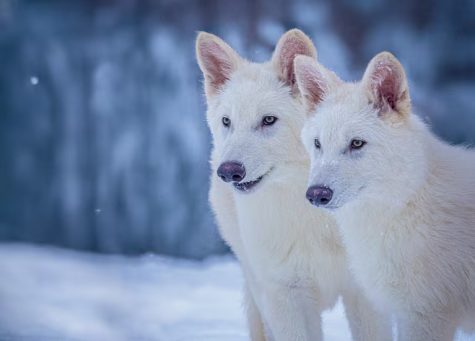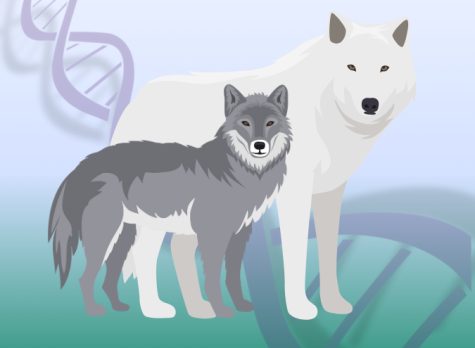
Carson Neuhausen | News Editor
October 20, 2025
For over 10,000 years, the dire wolf existed only in fossils and cave paintings. Once roaming alongside mammoths and saber-toothed tigers, it went extinct after the last Ice Age. Now, thanks to breakthroughs in genetic science, the dire wolf may be the first extinct animal to come back to life.

In April 2025, Colossal Biosciences announced a significant milestone in their dire wolf project. Researchers discovered 20 genetic biomarkers that were linked to key genetic traits. These traits included large size, extremely dense fur, and resistance to the cold. Using CRISPR (a gene editing technology), scientists were able to insert these traits into gray wolf embryos. The babies were carried by two surrogate dogs, both of which were large, healthy domestic dog mixes. The pups, born in October of 2024, showed dire wolf-like traits almost immediately. In addition to the dense fur and resistance to cold found in the dire wolves of old, Romulus, Remus, and Khaleesi are significantly larger than gray wolf pups at the same age. Senior Doran Farrel stated, “I’m kinda surprised that scientists managed to do that. I know that genomes are super hard to track. Just goes to show how advanced science is becoming.”
These wolves aren’t going to be exact clones of dire wolves, but they mark a significant advance in de-extinction research. Scientists constantly reiterate that this experiment’s goal is to restore biodiversity and not recreate extinct animals at random. The techniques discovered from this project would help to save endangered species before they go extinct. The same genetic tools may be used for other projects, like the restoration of the woolly mammoth or tasmanian tiger. After telling Maddon Sorrenson, a senior at SCHS, about the project and its implications, he said, “It makes sense why we would have to be careful with reviving extinct animals. After what happened with the wolves and deer in Yellowstone, I think it’s smart to revive species that will make a positive impact.”
Scientists stress that this project is a restoration, not a complete resurrection. This is because the dire wolf genome is currently incomplete; however, once it is finished, researches will have the ability to introduce pure dire wolf pups into the wild. The dire wolf project symbolizes both scientific process and moral responsibility. Sure, we can revive any extinct animal we want as long as we can obtain their genome; still, we must be able to restrain ourselves and only revive animals that will provide a positive impact on real-world ecosystems.

Leave a Reply